New farming machinery making farm life easier
Patrick Anderson, 66, now farms the property, Eurow View, originally established by his grandfather Emanuel.
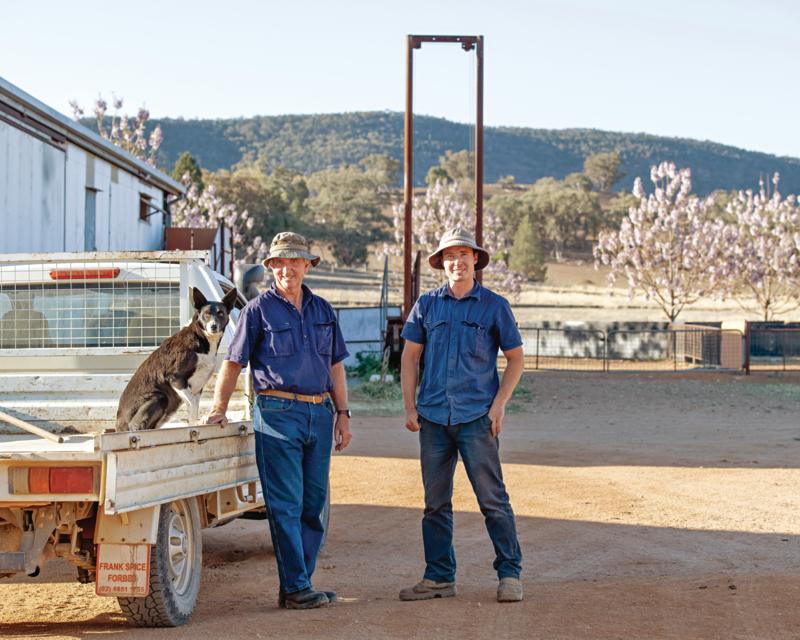 Patrick with son Bede and dog Pep on their property.
Patrick with son Bede and dog Pep on their property.
MY great-grandmother, Mary, was the first of our family to settle in Eugowra. She came from Cowra but shortly after arrival her husband went off to collect equipment and he fell sick
and died.
Mary was left to raise eight children, aged between one and 14, and manage her land alone. She died aged 105 when I was 10, so I can still vaguely remember her. Her son Emanuel was my grandfather and he selected this farm, Eurow View, where we now live on the Parkes Road. Clearing his original 300 acres [120 hectares] of scrub without mechanical assistance was a hard slog and to survive he had a few dairy cows and chooks plus an orchard with figs, apples, peaches and apricots. Every week he’d drive 25km to Parkes to sell eggs, butter, milk and jams – a fair distance in a sulky.
My grandfather had two sons, my father Edward and Ray, and they all worked together until my grandfather retired in the late 1940s. Uncle Ray then bought a farm in Parkes and Dad stayed here on what was by now 850 acres.
“In 1948, Dad went to Sydney to buy a tractor and came back with my mum Joan as well, so he got two for one in that deal!”
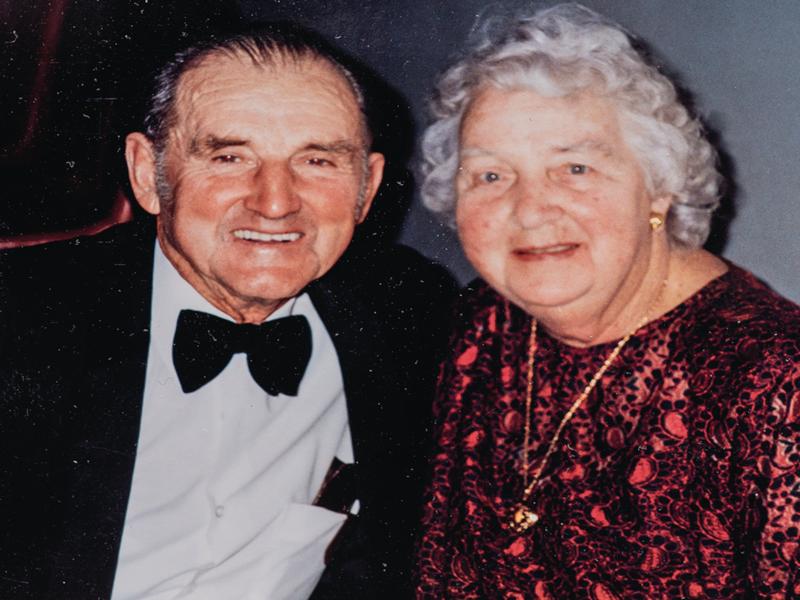 Patrick Anderson’s parents, Edward and Joan. Edward took over the farm in the late 1940s.
Patrick Anderson’s parents, Edward and Joan. Edward took over the farm in the late 1940s.
When Mum arrived, we had a rabbit-proof fence around our property but our neighbours’ farm was overrun. At sunset, you could look over at this hill about 700m away and it appeared to move because it was so covered in rabbits. When they got really hungry, they’d even ringbark trees for the sap. A lot of erosion attributed to over-clearing in the 1920s and 1930s was actually due to rabbits.
The release of myxomatosis in 1950 and then the calicivirus in 1996 totally decimated their numbers and farmers suddenly had pasture to feed stock. I’m noticing a few young rabbits again now so someone needs to chase them up. The problem is no-one has time.
I didn’t always think I’d be a farmer, I did go to Yanco Agricultural High School but when I finished, wool prices were so low – you couldn’t get them any lower – and financially everything was pretty ordinary, so I went to Sydney to study civil engineering. However, I ended up with the wrong blokes when I did my field training. They were civil engineers who wanted to be farmers and thought I was mad leaving the land so, one way or another, I decided to return in 1973 and I’ve never left since.
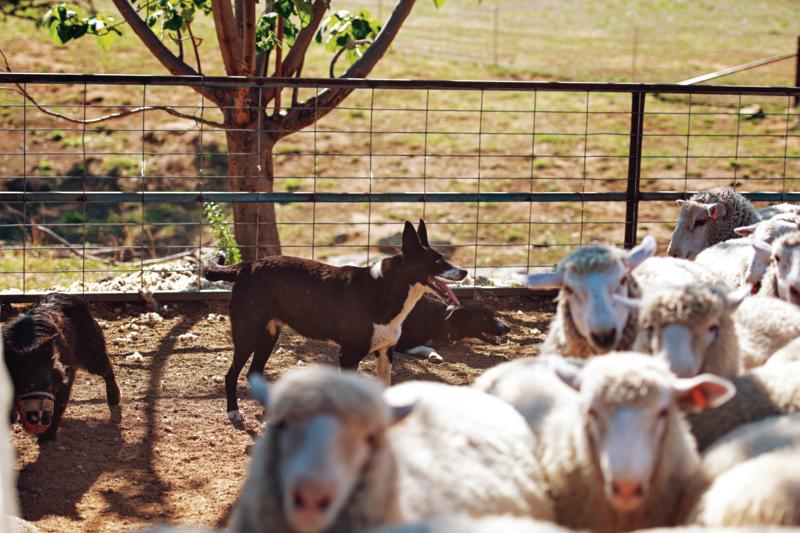 Farm dog Pep at work in the sheep yard.
Farm dog Pep at work in the sheep yard.
There’s been a huge evolution in machinery over that time. Just before I came back it was rare even to have a hydraulic ramp and lifting heavy wooden fence posts was one of the reasons Dad’s back was so bad. It eased up later on in his life and I put that down to getting a front-loading tractor.
“As machinery got larger and each man could handle more acres, we’ve needed less people on the land and in my opinion that’s been the ruination of community.”
A couple of family members can farm 8,000 acres now whereas once that would have been many more farms. Each farm had its own sports teams, now we’ve lost most of them. People had to stand in the porch at Eugowra church and everyone met up at the pub after work or on a Saturday afternoon. Now those places are empty.
That loss of a social life does affect you, especially at times like this when there’s drought and you have this constant daily grind of attending to animals. We don’t work harder physically but we work longer hours. In the 1940s there were no lights on tractors, so when the sun went down you had to stop.
RELATED ARTICLES ON RURAL COMMUNITY LIFE:
-
Right to farm legislation needed
-
Millthorpe community pulls together
-
Bingara: a rural community success story
I kept buying land until I ended up with 2,100 acres and today we run cross-breed sheep and around 400-500 acres of wheat, canola, oats, barley and triticale, plus grazing pasture such as lucerne or clover. Although I miss some things and everyone talks about the good old days, the only good thing about most of them is that they’ve gone.
When it comes to livestock, the research that has gone into worm, lice and blowfly control is major. The time controlling flystrike was one reason many people didn’t want to run sheep. You’d have to check each mob every two or three days to see which needed treatment. Now you’ve got chemicals that are easily applied and provide six months’ control.
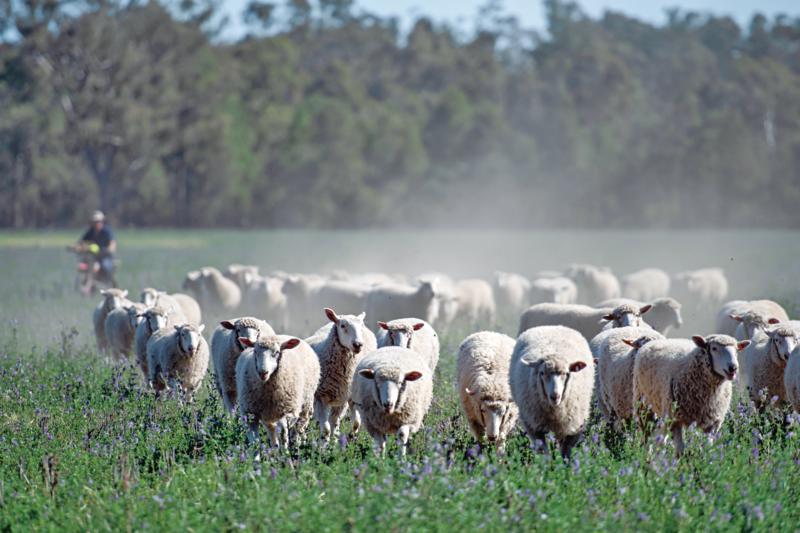 Patrick mustering the Anderson’s cross-breed sheep.
Patrick mustering the Anderson’s cross-breed sheep.
Since herbicides came along, we can deal with weeds, not disturb the soil and leave trash and stubble on top of the ground. Machinery slides through that trash whereas before the tines were so close together it only took a few twigs to clog everything up. Now you can sow into it and that prevents the sun baking the ground and leaves a microclimate cool enough for the microbes to work in.
RELATED: Hot headers: how to reduce fire risk
In the 1970s and 1980s we got cabs for the tractors. At first you were better off without one and putting up with the dust, sun or cold. The aircon kept breaking down and they’d trap all the heat from the transmission and were really noisy. Now they’re so quiet you can listen to the radio without having it turned up full volume and it’s not much different to being in a car. GPS has probably made the biggest difference though. There’s no double-sowing, wasting seed or fertiliser and you can cover many more hectares in an hour.
“Before, with the bigger machinery, a man had no hope of working out where his previous run was but a GPS can guide you to within 2cm, so the lift in productivity is astronomical.”
Markets have changed a lot now as well. In the 1970s only 10% of Australian lamb was exported. Now the majority goes overseas and that drives the price. In the 1940s and 1950s virtually all wool exports went to England.
After World War II, the Japanese took over as they started wearing suits to work, and we’ve always sold the fine-quality wool to the Italians. However, now it’s China that dominates the wool market. As their standard of living rises, they’re able to afford it.
Too much red tape in modern farming
Patrick’s wife Frances Anderson, 64, enjoys life on the land – despite the frustrating red tape that makes up modern farming.
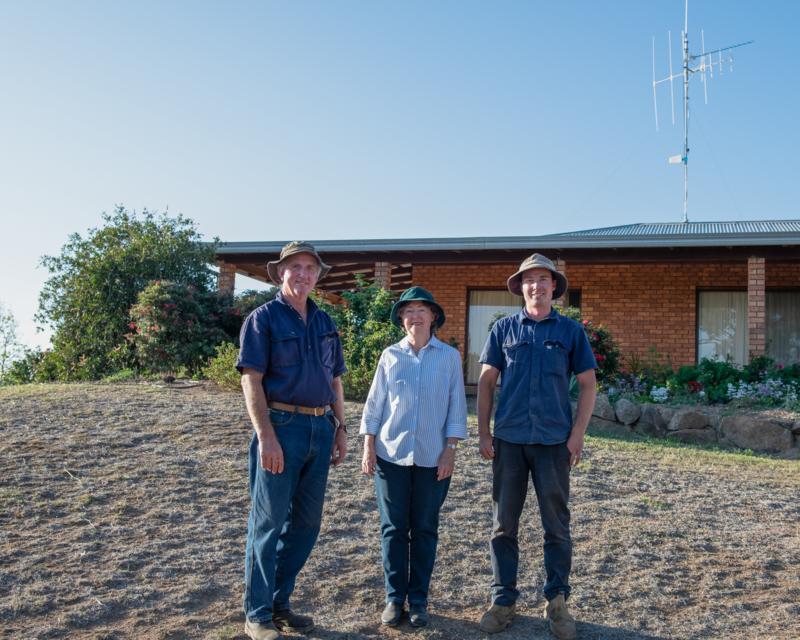 Patrick, Frances and Bede Anderson in front of the family homestead.
Patrick, Frances and Bede Anderson in front of the family homestead.
When I was younger, mother used to tell me: “Never marry a farmer”. Living on our family property in Mulyandry in the Central West, she knew how hard it was. Good farmers can always see something that needs doing.
I met Patrick at a tennis tournament and we married in 1981 and had three kids close together. My daughters Genevieve and Ariana have moved away and I tried to dissuade my son Bede from becoming a farmer. Patrick’s a good farmer and we’ve been successful considering the land we have, but I thought there had to be a better way of making a living, where you could take proper holidays, not worry about drought and spend Christmas Day with your kids instead of going out to fight fires.
I’d take Bede away from his dad so he didn’t learn anything and enrolled him in everything from swimming to speech and drama so he had lots of attributes and didn’t stay on the land. But he missed the open space and came home anyway – and he’s so happy I’ve realised you can take the farm out of the boy, but you can’t take the boy out of the farm. I’m glad he’s here now – not least because he’s taken over from me doing the books!
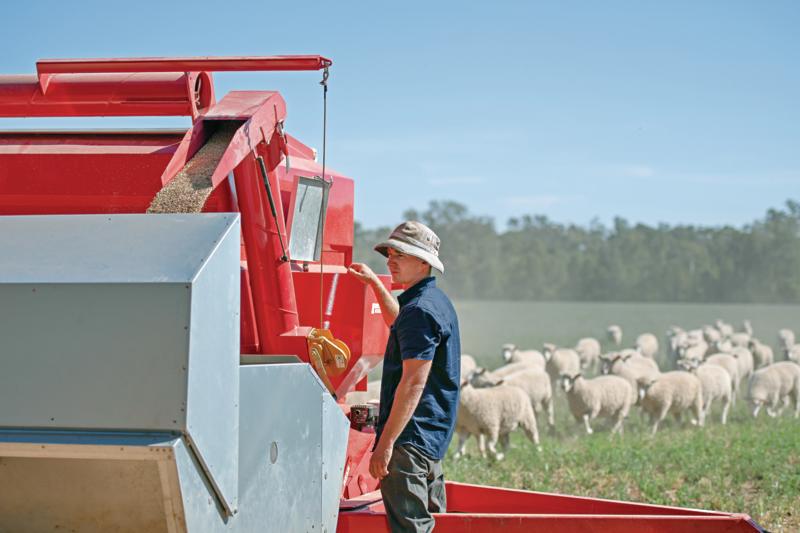 Bede feeding out barley from the Bromar feed cart.
Bede feeding out barley from the Bromar feed cart.
The changes I find most burdensome now are the impositions from bureaucrats. Just getting sheep to market you’ve got to fill out forms for this and forms for that and they’re putting more restrictions on what you can do. I go to all the NSW Farmers and saleyard meetings and the RMS [Roads and Maritime Services], for instance, might come and explain their latest issue such as towbars and how if you’re pulling an incorrect weight or your machine is a centimetre too wide you’ll be fined. A lot of it could be left to common sense.
Bede’s generation is growing up knowing they need all these permits but for our generation it’s a real impost. With livestock we’re supposed to have all this biosecurity, but on all the little farms they just have a couple of sheep or goats and probably wouldn’t even recognise a disease, so unless they’re going to do it properly – and I don’t think they’ll ever be able to – it’s an issue.
Corporate farming has also changed this area. A lot of owners don’t live on their land so they employ farm managers. They tend only to stay a few years so you don’t have that continuity of knowledge of farming an area any more. Sometimes, though, the city folk who do stay on their farms are more of a problem. I wish they had to do introductory courses in things like weed control, fox baiting, fencing and to join the bushfire brigade so they can support their neighbours.
RELATED ARTICLES:
-
Bushfire risks put farmers on the frontline
-
Pest control: Fair game on feral deer
With technology changing so quickly, the older generation could almost be run out. Bede bought a bigger tractor with very high-tech GPS and while Patrick can still drive it, Bede tends to take over those jobs now and leave his dad to tend stock. I wouldn’t have a hope of driving it.
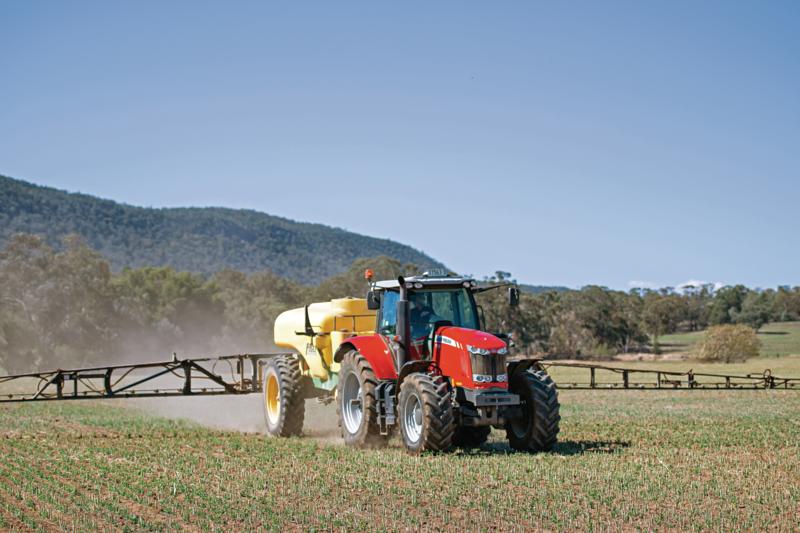 Bede spraying the last canola crop in the new tractor in preparation to sow the new wheat crop.
Bede spraying the last canola crop in the new tractor in preparation to sow the new wheat crop.
Both Patrick and Bede are very clever and can do their own repairs although even that’s changed. I can remember a time when there wasn’t much that a piece of wire and a bit of string couldn’t repair and now a lot of machines have to be taken into town to go on computerised equipment to check the fault.
“Despite Mum’s warning, I am glad I married a farmer. I’ve got a lovely house and outlook with an orchard, chickens and a veggie patch.”
I was a bit of a gypsy, travelling overseas for two years before we met and Patrick has been round Australia three times so I don’t mind we only seem to get away for weekends now. In fact the only time I’m not so happy is when our neighbours spread biosolids on their land. I know it’s good for the environment. But if the wind’s blowing our way, I can’t go outside because of the smell!
Working outside the best part of being a farmer
Bede Anderson, 32, defied his mother and returned to the family farm, happy to take up the challenges of new technology.
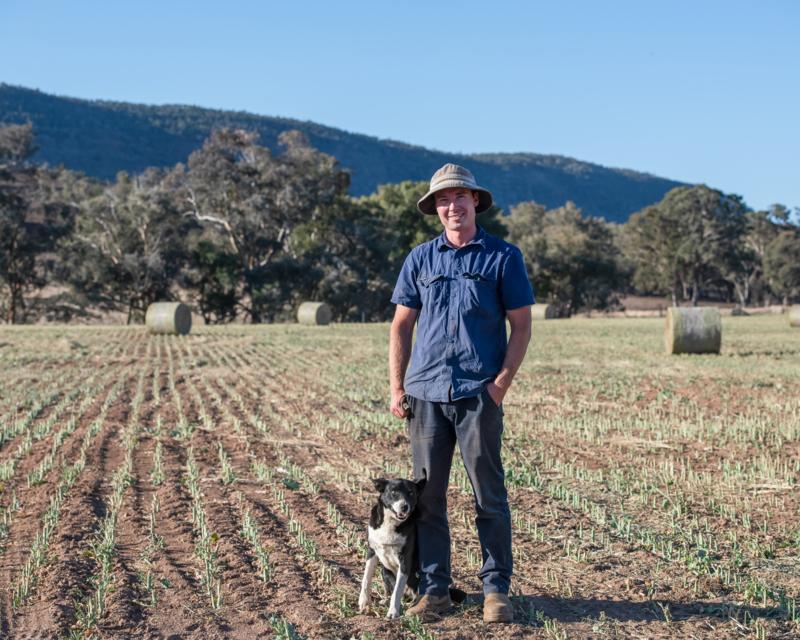 Patrick and dog Pep.
Patrick and dog Pep.
Mum tried to persuade me not to be a farmer and I did get a job in Wollongong doing commercial real estate, but computers and paperwork weren’t my thing. I loved being outside and driving a tractor. I’m not so keen on our sheep but they’re growing on me now we’re starting to make some money out of them.
Mum and Dad said if I was coming home, I had to go to uni and get some qualifications so I did an agricultural business management course but I didn’t enjoy it. I reckon half the class dropped out and although there are probably bits I’ve used, I didn’t learn anything major.
I came back permanently about nine years ago and since then we’ve got a bigger air seeder and tractor and we’ve started share farming a block towards Eugowra and leased a bit of ground from a neighbour. Because machinery is getting bigger, you can cover more land much faster and it’s a lot less strenuous. Boom sprays have gone from 18m to 27m wide with bigger tanks so you don’t have to fill up so often and GPS made a big difference when that came in. You can do everything with so much more accuracy in a bigger machine.
RELATED ARTICLES ON FARMING TECHNOLOGY:
-
Top investment trends in farm machinery
-
Hydrogen-fuelled tractors: a clean energy option
-
Tips to increase your yield
-
Clever tricks to reduce on-farm erosion
There haven’t been too many changes in the sheep department. Shearing’s still hard work. They did try to come up with alternatives with nets and injectables so the fleece just broke at the skin and fell off but the expense and hassle meant that idea never took off and we didn’t try it.
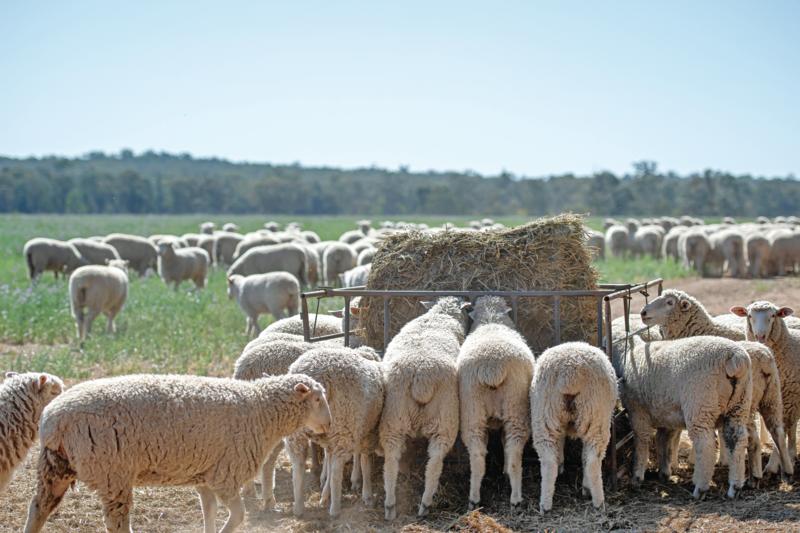 The Andersons’ second-cross lambs feed on lucerne and clover hay.
The Andersons’ second-cross lambs feed on lucerne and clover hay.
The place we’re share farming is all cropping but we ended up putting lambs on a few days ago to eat that off. They’re always bringing out more varieties of grazing crops and it’ll be good when they develop more drought-tolerant varieties. Feeding at the moment takes up most of our time and we’ve moved into self-feeders and got a Bromar feed cart. Having seen two major droughts you do understand the need to plan for it more and we’ve put up more silos to store grain and we’re thinking of building another hay shed and storing more hay to be better prepared.
RELATED: Young gun creates drought lifesavers
“Dad and I work well together. He asks my opinion. It doesn’t mean he’ll leave me and take a holiday though. In fact I’ve never known him to take a holiday.”
Dad did go to a funeral in Queensland recently and stayed on a few extra days so that was something! Mind you, I don’t go on holiday now either. I’m paying off my tractor. I’ve got other things to spend my money on.
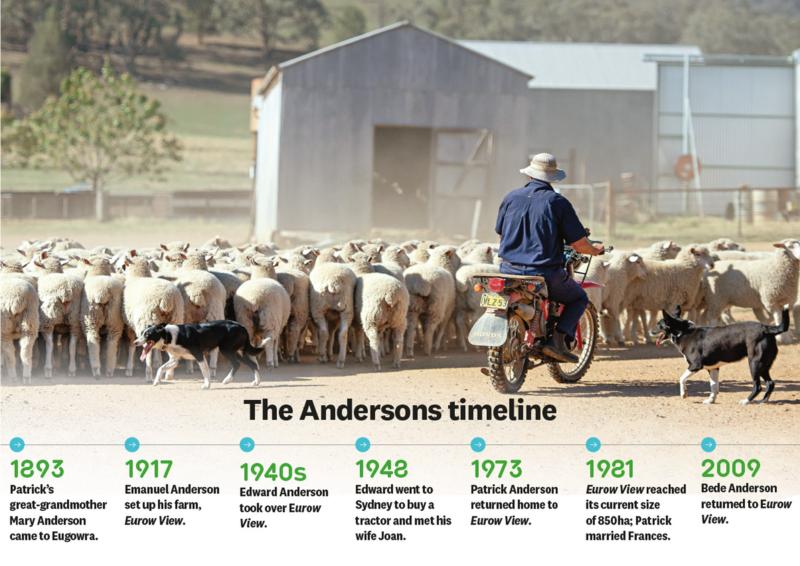
I love being on the farm. You don’t have to bother with other people, that’s a big benefit, and I love spending every day outside. Harvest is my favourite time. We have bigger trucks and headers so it’s easier to get our yields in. We sit up there in air-conditioned comfort, seeing our work paying off and can’t complain at all.